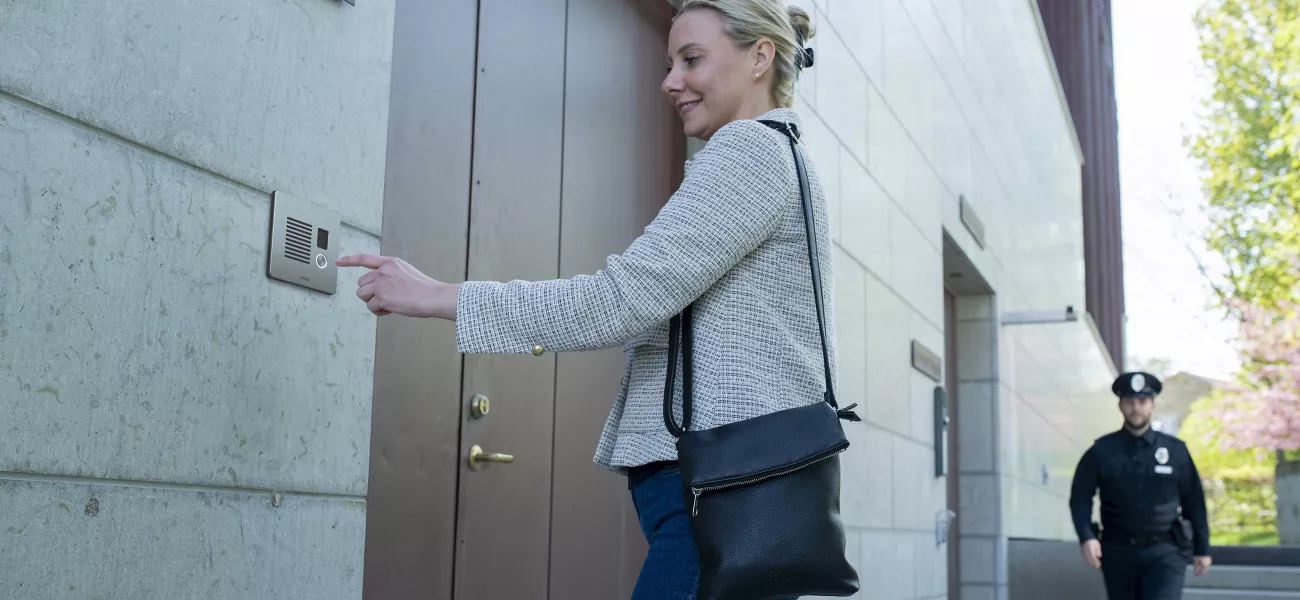
The other day I was browsing the website of one of the big online retailers. Perhaps unsurprisingly, the video doorbells and intercoms products caught my eye. It’s a category that has exploded in recent years. It struck me that the growth in consumer technology products previously found mainly in the commercial world, such as intercoms, could create a risk that some of the key differences are being overlooked. I thought I’d take a closer look.
More complex products needed more specialist expertise
Though perhaps less noticeable on the surface – after all, modern intercoms, whether for consumers or businesses, are well-designed and aesthetically pleasing – the technical complexity of commercial intercoms products is much greater. As a result, they are often sold, installed, and supported through the partner network of the original manufacturer. On the consumer side, conversely, these products are readily available to anyone through retail outlets and self-installed at home.
The technical complexity of commercial intercoms, their capabilities, and the ability to configure them for specific use cases and requirements, drives this. It’s a bit like looking at the difference between a motorcycle and a bicycle. They both have two wheels and can get you where you are going, but one has more complex engineering and way more capabilities.
The robustness needed for business use
If you’re anything like me, your doorbell at home might be rung a few times each week at most. In commercial environments – business and large residential properties – this might be a few times each minute.
It’s obvious, therefore, that commercial intercoms must be designed (and certified) to withstand much higher levels of use. And while your doorbell might be sheltered under a porch, commercial intercoms are often positioned where withstanding the full force of weather conditions is essential. Finally, and unfortunately, vandalism is another risk facing intercoms in commercial environments.
Commercial grade intercoms come with a number of different certifications related to these issues. For weather protection, look for an Ingress Protection (IP) rating for Dust (0-6) & Water (0-9). For example, IP65 is dust-tight and protected from water jets in any direction. Another to look for is an IK rating. This measures impact resistance from 0 to 10, helping protect from vandalism. There are several other certifications such as UL, CE, and MET , along with NDAA compliance when looking at safety and security.
Security in every aspect of commercial intercoms
Intercoms are inherently related to security: helping people manage those people entering a building or site. But commercial grade video intercoms feature security throughout the product. Increased secure connectivity and power, usually via POE (Power over Ethernet), is one such area. This gives the ability to power and connect intercoms with a single cable. The beauty of this is seen in the network closet, where all the equipment uses the same battery backup/generator solution.
In consumer intercoms, Wi-Fi is becoming the de facto solution for connection. This immediately means a separate power supply is needed, and therefore also requires a separate backup power solution. Wi-Fi also leads to potential reliability and latency issues due to a poor signal or congestion issues, depending on the network.
There’s increasing evidence that bad actors, thieves, and burglars are using Wi-Fi jammers to disable wireless devices like consumer security cameras and video intercoms. This is impossible with commercial devices connected via network cables.
If there are security concerns that bad actors could disconnect wired network devices like an intercom and plug in their own devices, commercial grade products have additional options to protect. One is a tamper alarm. This trigger can play a message over the intercom, have the intercom automatically call security personnel, or send an alert the second it detects someone tampering with the device. There are also network security protocols these intercoms support, such as 802.1x, which, if configured, blocks all devices except the one allowed.
Ultimate configuration and customization for commercial intercoms
A tamper alarm to trigger a call or notification is just the tip of the iceberg in configuration for commercial grade intercoms. These intercoms can setup multiple complex events or automations, effectively a series of customizable “if this, then that” scenarios. For instance, if a door is propped open too long, an audio message on the intercom can be triggered requesting that the door is closed, along with a notification being sent to operators.
For loud environments, for example a loading dock in a warehouse, the intercom could trigger a network-connected strobe or siren when someone pushes the button on the intercom or if the intercom detects motion or hears a loud noise.
Commercial intercoms also have relays built in to trigger and directly power a door lock. The capabilities compound on some of these intercoms that also have access control built in, such as RFID (radio frequency identification), Bluetooth, and/or a PIN pad. Now, when an RFID key fob is swiped, the intercom could be configured to not only unlock the door, but also to open it, turn the lights on, play my favorite song, brew me a cup of coffee, and send an email to my boss to let him know I came in early again…
Not forgetting the core function of intercoms: calling
The core function of both consumer and commercial intercoms is, of course, calling. Press a button and speak live to someone (whether present or remote). Again, commercial grade intercoms are highly configurable when it comes to calling.
The foundation for this is the use of open standards and protocols such as SIP (Session Initiation Protocol) to enable video and voice over IP. Is it desirable for the intercom to call a group or just an individual? Would it be beneficial to call a phone app, a video answering unit, and a desk phone at the same time? How about rolling over to someone else if the first contact doesn’t answer? And what about scheduling? Either calling security or playing a closed message after hours and on weekends, and then at 8:00am Monday reverts to directing the call to a desk phone and mobile application. Ultimately flexibility in configuration comes through using open standards.
For additional security and incident investigation, there’s the ability to record the video from the intercom camera as well as make and receive video calls all through a video management system (VMS). This becomes an integrated part of network security camera solution, using an open standard such as those provided by ONVIF for connectivity.
An appropriate level of support and warranty
When it comes to more complex engineering and higher quality, commercial grade intercoms are well-built and supported products. This is reflected in the length of the warranty provided. Consumer products usually have a warranty of 12 months or less. That’s not something a professional installer would want to stand behind, nor their customers be happy with. When shifting to a commercial grade video intercom that the manufacturer feels confident in, the market shows most with a 2- to 5-year warranty. This is testament to the quality of products being provided.
The list of differences between products designed for consumer use and those for commercial application could go on. However, the point is clear. A consumer video doorbell isn’t fit for business use. Commercial intercom use cases require robust, high-quality, commercial grade video intercoms.
